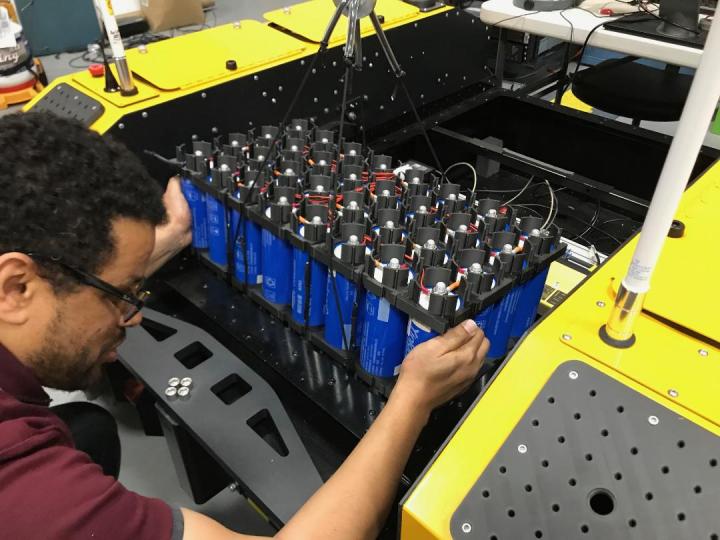
Credit: CCDC Army Research Laboratory photo
ABERDEEN PROVING GROUND, Md. — An energy-efficient generator intended to power private residences could power autonomous military vehicles for months, according to Army researchers.
A team of scientists and engineers from the U.S. Army Combat Capabilities Development Command’s Army Research Laboratory focused on accelerating Army modernization. The tests are part of work began almost two years ago in support of the Department of Energy’s Advanced Research Projects Agency-Energy initiative to evaluate the Stirling cycle generator, which is known for its high-efficiency, virtually silent, long life and low emissions.
Researchers are looking for multi-fuel capabilities. In addition to fossil fuels, they are developing new technologies to efficiently transform biomass like wood into electricity on-the-go.
Justin Shumaker, the lab’s lead researcher on the project, said he believes this is the first time a Stirling generator of this scale has been used for propulsion on an autonomous ground vehicle — a tough task for a generator originally designed to generate electricity and provide heat for homes, he said.
“In order for a Stirling engine to operate, there needs to be a temperature difference between the hot and cold ends,” Shumaker said. “The cooling loop removes heat from the cold end to keep it cold.”
The researchers designed and manufactured several new technologies to use this generator for propulsion. The first was a DC-DC power converter that efficiently transforms electrical power from the Stirling generator set to the vehicle’s electrical bus.
They also modified a Clearpath Robotics warthog, a large all-terrain unmanned ground vehicle capable of traveling on land and in water, leaving only the original chassis and wheels intact.
The team then designed a new battery using lithium-titanate cells and a battery management system, which is required to ensure the batteries are safe to use.
Shumaker said they also designed a cooling loop for the new equipment.
“This all has to be done in a way that integrates well with the vehicle, is reliable, has enough headroom to operate on very hot days and uses very little electricity for the pumps and fans,” he said.
There are many mechanical, electrical and software elements required to integrate a Stirling generator set into a hybrid electric vehicle for propulsion.
“One day, autonomous robots will outperform Soldiers at certain tasks and do so without the requirement of eating, sleeping or resting,” Shumaker said. “This has the greatest potential benefit to the Soldier, removing them from harm’s way.”
The Army team was on track to deliver the new technology to ARPAe this spring, but after a statewide stay-at-home order in response to COVID 19 outbreaks, they halted onsite testing. Shumaker said they are now targeting delivery for this fall.
“It’s more likely to see this generator used as a feasibility study and identify ways to improve it and scale it up,” Shumaker said. “What we learn from evaluating this genset will inform ways to improve the genset for a future Army system, whether for propulsion or as a stationary generator.”
Shumaker said he hopes there will be an opportunity to fund a next-generation version of this technology and “focus on aspects that involve making it lighter and more cost effective because the efficiency is already very good.”
Shumaker discussed this technology in the What We Learned Today podcast last August with then-laboratory Director Dr. Phillip Perconti, who now serves as the Army’s chief scientist and deputy assistant Secretary of the Army for Research and Technology.
Other research collaborators include American energy company SunPower.
CCDC Army Research Laboratory is an element of the U.S. Army Combat Capabilities Development Command. As the Army’s corporate research laboratory, ARL discovers, innovates and transitions science and technology to ensure dominant strategic land power. Through collaboration across the command’s core technical competencies, CCDC leads in the discovery, development and delivery of the technology-based capabilities required to make Soldiers more lethal to win our nation’s wars and come home safely. CCDC is a major subordinate command of the U.S. Army Futures Command.
###
Media Contact
T’Jae Ellis
[email protected]
Original Source
https:/




